#Cybersecurity In Logistics Software
Explore tagged Tumblr posts
Text
Cybersecurity In Logistics Software: Protect Your Supply Chain

Logistics software is Integral in modern supply chain management, streamlining operations, optimizing resource allocation, and enhancing overall efficiency. With the increasing digitization of logistics processes, organizations rely heavily on software solutions to facilitate real-time tracking, inventory management, and seamless communication across the supply chain network.
However, this escalating reliance on digital technologies also exposes the sector to a surge in cybersecurity threats. As logistics systems become more interconnected, the vulnerability to cyberattacks rises, necessitating a proactive approach to cybersecurity to safeguard sensitive data, ensure uninterrupted operations, and protect the integrity of the entire supply chain.
Importance Of Cybersecurity In Logistics Software
The importance of cybersecurity in logistics software cannot be overstated, given the integral role such software plays in modern supply chain management. As logistics systems become increasingly digitized, the volume of sensitive data transmitted and stored also rises, making them attractive targets for cyber threats. Some primary factors are:
Data Sensitivity: Logistics software, entrusted with critical data, necessitates robust cybersecurity to prevent unauthorized access or breaches that could jeopardize sensitive information crucial to supply chain processes. The imperative lies in implementing stringent security measures to guard the software, ensuring the integrity, confidentiality, and availability of vital data within the intricacies of supply chain management.
Operational Disruption: Cybersecurity violations in logistics software create a ripple effect, causing disruptions that reverberate through operations, specifically affecting inventory management and overall supply chain efficiency. These disruptions not only introduce delays but also pose the risk of substantial financial losses, underscoring the critical need for strong cybersecurity measures to safeguard the seamless functioning of the supply chain.
Supply Chain Integrity: Securing logistics software is a keystone in preserving the authenticity of products within the supply chain. It serves as a vital defense, preventing tampering, countering fake activities, and preventing unauthorized access. The integrity of the entire supply chain relies on robust cybersecurity measures, ensuring the trustworthiness and reliability of products from origin to destination.
Financial Implications: The financial ramifications of cybersecurity incidents extend beyond the immediate organization employing logistics software, impacting supply chain partners and stakeholders. These incidents can lead to cascading economic losses, affecting the financial stability of interconnected entities. Establishing robust cybersecurity measures is crucial to reinforce the entire supply chain ecosystem against potential financial pitfalls and ensure collective resilience.
Continuous Connectivity: In an era of escalating interconnectedness, the imperative for logistics software extends beyond basic functionality, emphasizing the need for secure information flow. It facilitates real-time tracking and promotes efficient communication and coordination among diverse supply chain participants. Ensuring a seamless operational flow hinges on cybersecurity measures, safeguarding the integrity and efficiency of the entire supply chain network.
Regulatory Compliance: Adhering to rigorous cybersecurity standards, mandated by regulatory bodies, emerges as a critical imperative within the logistics landscape. It underscores the legal and compliance dimensions, making robust cybersecurity an indispensable element in the strategic management of logistics software. The commitment to stringent standards mitigates risks and ensures a resilient and law-abiding logistics framework.
Protecting against malware, phishing, and insider threats is paramount to maintaining integrity, confidentiality, and availability. Robust cybersecurity measures ensure the security of logistics software and safeguard the overall resilience of the supply chain ecosystem.
Common Cybersecurity Threats In Logistics Software
Malware Attacks: The vulnerability of logistics software to diverse malware, such as ransomware and trojans, poses multifaceted risks to the supply chain. Beyond compromising data integrity and disrupting operations, these malicious entities demand financial ransoms for resolution, accentuating the urgent need for robust cybersecurity measures to thwart, detect, and neutralize evolving malware threats within logistics systems.
Phishing and Social Engineering: Threat players strategically logistics professionals by employing deceptive emails and sophisticated social engineering tactics. Their objectives extend beyond very unauthorized access, aiming to steal valuable credentials or manipulate individuals for malicious purposes. Heightened awareness and cybersecurity training become pivotal defenses, fortifying logistics professionals against evolving and intricate cyber threats.
Insider Threats: The risk emanating from employees or internal stakeholders with access to logistics software is multifaceted, encompassing intentional and unintentional actions. This susceptibility underscores the potential for data breaches, system compromises, or other security incidents originating within the organization. Effective cybersecurity strategies include stringent access controls, continuous monitoring, and comprehensive training to mitigate these internal risks.
Supply Chain Interceptions: Cybercriminals, recognizing potential vulnerabilities in logistics software, may exploit them to orchestrate sophisticated attacks. These attacks extend beyond unauthorized access, involving the interception or manipulation of the flow of goods. This nefarious activity poses substantial risks, encompassing theft, tampering with products in transit, and necessitating heightened cybersecurity measures to safeguard the integrity of the supply chain.
Third-Party Vulnerabilities: Security weaknesses within third-party applications or services, integrated with logistics software, present a critical challenge, potentially serving as entry points for cybercriminals. These vulnerabilities extend beyond the immediate software, providing adversaries avenues to compromise the entire supply chain network. Robust cybersecurity measures, including thorough vetting and continuous monitoring, are indispensable safeguards in this interconnected landscape.
Best Practices For Cybersecurity In Logistics Software
In the dynamic and evolving landscape of supply chain management, the implementation of robust cybersecurity practices becomes a necessity and a strategic imperative. To ensure resilience in the ever-changing cybersecurity landscape, logistics software must be safeguarded using a comprehensive approach that includes constant threat monitoring, proactive risk mitigation, and the implementation of cutting-edge security solutions.
Regular Software Updates: Safeguarding logistics software mandates a proactive approach, emphasizing the continuous maintenance of up-to-date systems. Regular updates serve as a frontline defense, addressing vulnerabilities promptly and applying essential security patches. This dynamic strategy ensures the software's resilience against emerging threats, fostering a robust cybersecurity posture to withstand the evolving challenges within the intricate realm of supply chain management.
Data Encryption: Fortifying the security perimeter of logistics software involves the implementation of robust encryption protocols for sensitive data. By encrypting information in transit and at rest, logistics software ensures an added layer of protection against unauthorized access and interception attempts. This comprehensive encryption strategy forms a resilient defense, safeguarding critical data throughout its journey within the supply chain network.
Multi-Factor Authentication (MFA): Elevating the security posture of logistics systems involves the strategic incorporation of Multi-Factor Authentication (MFA). By deploying MFA, logistics software bolsters access controls, introducing an additional layer of security. This fortification becomes particularly pivotal for critical logistics systems, providing robust defense mechanisms against unauthorized access attempts and enhancing the overall resilience of the supply chain.
Employee Training and Awareness: The implementation of a proactive cybersecurity strategy extends to conducting frequent and comprehensive training programs for logistics personnel. These programs go beyond merely educating about cybersecurity threats and best practices; they emphasize the paramount importance of strict adherence to security protocols. This holistic approach significantly diminishes the risk of human error, fostering a security-conscious culture within the logistics ecosystem.
Cybersecurity Audits and Assessments: Establishing a resilient cybersecurity framework for logistics software involves the systematic implementation of periodic assessments and audits. These proactive evaluations serve as vital checkpoints, meticulously identifying vulnerabilities, weaknesses, and areas for improvement. Through this iterative process, organizations can ensure a continuous cycle of security enhancement, fortifying logistics software against emerging cyber threats within the ever-evolving landscape of supply chain management.
Implementing these best practices is not just a checklist but a strategic foundation for a comprehensive cybersecurity approach. Collectively, they form an integrated strategy, fortifying logistics software against potential threats. This not only safeguards critical systems but also promotes the overall resilience and integrity of the entire supply chain network in the face of evolving cyber challenges.
Conclusion
With the increasing digitization of processes, robust cybersecurity is essential. Samyak Infotech, a leading tech company specializing in logistics software development, recognizes evolving cyber threats and follows best practices to ensure secure and resilient supply chain ecosystems. By prioritizing up-to-date systems, encryption, multi-factor authentication, employee training, and cybersecurity audits, Samyak Infotech sets a gold standard for safeguarding logistics software, contributing to a comprehensive cybersecurity strategy. Partner with Samyak Infotech for cutting-edge solutions and ensure the security and longevity of your supply chain.
0 notes
Text

Ready to take the plunge and sell your business? Vista can help you with that. Our process is designed to get you maximum value for your business, sell it in a timely manner and find the right buyer.
#business#small business#smb#information technology#it#cybersecurity#msp#mssp#it services#security#software#technology#staffing#hvac#plumbing#manufacturing#logistics#transportation#sellyourbusiness
0 notes
Text
Advanced Cybersecurity Risk Management Software | vanguardtec
Protect your organization with VanguardTec’s cutting-edge cybersecurity risk management software. Identify threats, reduce vulnerabilities, and ensure compliance—all in one platform. Learn more now.
0 notes
Text
UBITracer Smart Tracking Device: Pinpoint Your Location with Triple Accuracy
1. WiFi Location with UBITracer Tracking Device: Your Urban Navigator 🌆
When surrounded by towering skyscrapers or navigating narrow streets, traditional GPS often struggles. That’s where WiFi location shines.
Benefits: Ultra-precise in urban areas, pinpointing locations with remarkable accuracy.
Use Case: Imagine delivering goods in a crowded city. WiFi location ensures your driver can identify specific buildings or businesses, even in GPS shadow zones.
2. GPS: Precision in Open Spaces 🌄
For wide-open areas like highways, rural roads, or warehouses, GPS is unbeatable.
Accuracy: Within 8 meters, smaller than the size of a standard shipping container!
Use Case: From farm fields to container yards, GPS keeps your operations running smoothly and ensures your assets are always trackable.
3. GSM Location: Always Connected, Even Off the Grid 📶
When WiFi and GPS are unavailable — think mountains, deserts, or dense forests — GSM (cellular signal) steps in as the ultimate fallback.
Reliability: Provides approximate location even in the most remote regions.
Use Case: Ideal for supply chain logistics or emergency response teams operating in challenging environments.
Seamless Switching for Uninterrupted Accuracy 🔄 Hardware
What sets UBITracer apart is its automatic switching capability. The device intelligently chooses the most effective method in real time, ensuring uninterrupted tracking accuracy regardless of your surroundings.
More Than Just Location Tracking Usages
UBITracer isn’t just about knowing where your assets are — it’s about understanding their condition too. Our Multi-Sensor GPS collects and transmits crucial data, including:
Temperature
Humidity
Acceleration
Pressure
Door Openings
This holistic approach empowers supply chain managers to monitor asset health while tracking their location.
Why Businesses Love UBITracer Quality & Security
Our clients use UBITracer to:
Ensure perishable goods stay within safe temperature ranges.
Monitor potential damage during transport through acceleration data.
Verify door openings to prevent theft or tampering.
Explore more real-world use cases at www.ubitracer.com.
Special Offer: Try UBITracer for FREE!
We’re so confident in the value of UBITracer that we’re offering a limited-time free device, along with free cellular data and access to our IoT software platform.
Here’s how to claim:
Purchase a UBITracer Multi-Sensor GPS on Amazon:
Multi-Sensor GPS — Ideal for Valuables ZS-300L
Long-Life Tracker for Temperature Monitoring ZT-28E
Send your Amazon order number and device serial number to [email protected].
Enjoy complimentary cellular data and free platform usage.
For a limited time, receive a full refund through Amazon, making this a risk-free opportunity!
Act Fast — Supplies Are Limited!
Take your IoT journey to the next level with UBITracer. Contact [email protected] today, and let us help you transform how you track and manage your assets.
Stay confident. Stay connected. 🧭
#gps tracker#iotsolutions#logistics#software#gps device#gps and navigation#iot platform#iot development services#innovation#iot applications#iot#technologynews#industrial#tracking#application#apps#supplychainsolutions#supply chain management#supply chain optimization#supplychainlogistics#supplychaininnovation#warehouse#cybersecurity
1 note
·
View note
Text
In today’s fast-paced world of logistics innovation and evolution have become the driving forces behind success. As we step into 2024, the logistics sector will undergo extensive disruptions, fueled by game-changing innovations that promise to revolutionize supply chain management as we know it.
At iFour, we take immense pride in our expertise in the logistics industry, and we are excited to share with you the trends that are currently transforming this dynamic sector in Australia. As a leading custom Logistics software development company, we understand the unique challenges and opportunities facing businesses in the Australian market.
Here are the key trends that are reshaping the logistics landscape and how our solutions can help your company stay ahead of the curve.
#Supply Chain Technology#E-commerce Logistics#Automation and Robotics#Blockchain in Logistics#Sustainable and Green Logistics#Last-Mile Delivery Solutions#Data Analytics and Predictive Insights#3D Printing in Logistics#IoT (Internet of Things) in Supply Chain#Artificial Intelligence in Transportation#On-Demand and Sharing Economy Logistics#Digital Twins in Warehousing#Autonomous Vehicles and Drones#Climate Change and Resilience Planning#Cross-Border Trade and Customs#Cybersecurity in Supply Chain#Inventory Management Strategies#Reverse Logistics and Returns#Multi-Modal Transportation#software outsourcing#software development company#.net development
0 notes
Text
DAY 6274
Jalsa, Mumbai Aopr 20, 2025 Sun 11:17 pm
🪔 ,
April 21 .. birthday greetings and happiness to Ef Mousumi Biswas .. and Ef Arijit Bhattacharya from Kolkata .. 🙏🏽❤️🚩.. the wishes from the Ef family continue with warmth .. and love 🌺
The AI debate became the topic of discussion on the dining table ad there were many potent points raised - bith positive and a little indifferent ..
The young acknowledged it with reason and able argument .. some of the mid elders disagreed mildly .. and the end was kind of neutral ..
Blessed be they of the next GEN .. their minds are sorted out well in advance .. and why not .. we shall not be around till time in advance , but they and their progeny shall .. as has been the norm through generations ...
The IPL is now the greatest attraction throughout the day .. particularly on the Sunday, for the two on the day .. and there is never a debate on that ..
🤣
.. and I am most appreciative to read the comments from the Ef on the topic of the day - AI .. appreciative because some of the reactions and texts are valid and interesting to know .. the aspect expressed in all has a legitimate argument and that is most healthy ..
I am happy that we could all react to the Blog contents in the manner they have done .. my gratitude .. such a joy to get different views , valid and meaningful ..
And it is not the end of the day or the debate .. some impressions of the Gen X and some from the just passed Gen .. and some that were never ever the Gen are interesting as well :
The Printing Press (15th Century)
Fear: Scribes, monks, and elites thought it would destroy the value of knowledge, lead to mass misinformation, and eliminate jobs. Reality: It democratized knowledge, spurred the Renaissance and Reformation, and created entirely new industries—publishing, journalism, and education.
⸻
Industrial Revolution (18th–19th Century)
Fear: Machines would replace all human labor. The Luddites famously destroyed machinery in protest. Reality: Some manual labor jobs were displaced, but the economy exploded with new roles in manufacturing, logistics, engineering, and management. Overall employment and productivity soared.
⸻
Automobiles (Early 20th Century)
Fear: People feared job losses for carriage makers, stable hands, and horseshoe smiths. Cities worried about traffic, accidents, and social decay. Reality: The car industry became one of the largest employers in the world. It reshaped economies, enabled suburbia, and created new sectors like travel, road infrastructure, and auto repair.
⸻
Personal Computers (1980s)
Fear: Office workers would be replaced by machines; people worried about becoming obsolete. Reality: Computers made work faster and created entire industries: IT, software development, cybersecurity, and tech support. It transformed how we live and work.
⸻
The Internet (1990s)
Fear: It would destroy jobs in retail, publishing, and communication. Some thought it would unravel social order. Reality: E-commerce, digital marketing, remote work, and the creator economy now thrive. It connected the world and opened new opportunities.
⸻
ATMs (1970s–80s)
Fear: Bank tellers would lose their jobs en masse. Reality: ATMs handled routine tasks, but banks actually hired more tellers for customer service roles as they opened more branches thanks to reduced transaction costs.
⸻
Robotics & Automation (Factory work, 20th century–today)
Fear: Mass unemployment in factories. Reality: While some jobs shifted or ended, others evolved—robot maintenance, programming, design. Productivity gains created new jobs elsewhere.
The fear is not for losing jobs. It is the compromise of intellectual property and use without compensation. This case is slightly different.
I think AI will only make humans smarter. If we use it to our advantage.
That’s been happening for the last 10 years anyway
Not something new
You can’t control that in this day and age
YouTube & User-Generated Content (mid-2000s onward)
Initial Fear: When YouTube exploded, many in the entertainment industry panicked. The fear was that copyrighted material—music, TV clips, movies—would be shared freely without compensation. Creators and rights holders worried their content would be pirated, devalued, and that they’d lose control over distribution.
What Actually Happened: YouTube evolved to protect IP and monetize it through systems like Content ID, which allows rights holders to:
Automatically detect when their content is used
Choose to block, track, or monetize that usage
Earn revenue from ads run on videos using their IP (even when others post it)
Instead of wiping out creators or studios, it became a massive revenue stream—especially for musicians, media companies, and creators. Entire business models emerged around fair use, remixes, and reactions—with compensation built in.
Key Shift: The system went from “piracy risk” to “profit partner,” by embracing tech that recognized and enforced IP rights at scale.
This lead to higher profits and more money for owners and content btw
You just have to restructure the compensation laws and rewrite contracts
It’s only going to benefit artists in the long run
Yes
They can IP it
That is the hope
It’s the spread of your content and material without you putting a penny towards it
Cannot blindly sign off everything in contracts anymore. Has to be a lot more specific.
Yes that’s for sure
“Automation hasn’t erased jobs—it’s changed where human effort goes.”
Another good one is “hard work beats talent when talent stops working hard”
Which has absolutely nothing to with AI right now but 🤣
These ladies and Gentlemen of the Ef jury are various conversational opinions on AI .. I am merely pasting them for a view and an opinion ..
And among all the brouhaha about AI .. we simply forgot the Sunday well wishers .. and so ..














my love and the length be of immense .. pardon

Amitabh Bachchan
107 notes
·
View notes
Text
2024 team sponsors recap!
this is completely irrelevant to F1 but i study and do these stuffs for a living sooo 😩😩 2023 sponsors are based on the sponsors that are there at the beginning of the season (new sponsors that join in the middle of the season will be classified as 2024's)
Mercedes AMG Petronas F1 Team:
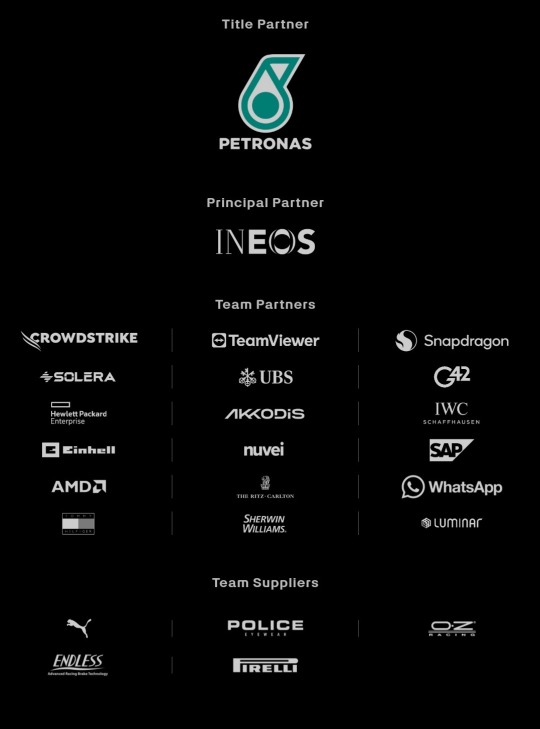
New sponsors: Whatsapp, Luminar (American tech company), SAP (German software company), nuvei (Canadian credit card services), Sherwin Williams (American painting company) 2024 data last update: 2024/02/14
Old sponsors that left: Monster Energy, Pure Storage (American technology company), fastly (American cloud computing services), Axalta (American painting company), Eight sleep (American mattresses company) 2023 data last update: 2023/01/07
Oracle Red Bull Racing F1 Team:
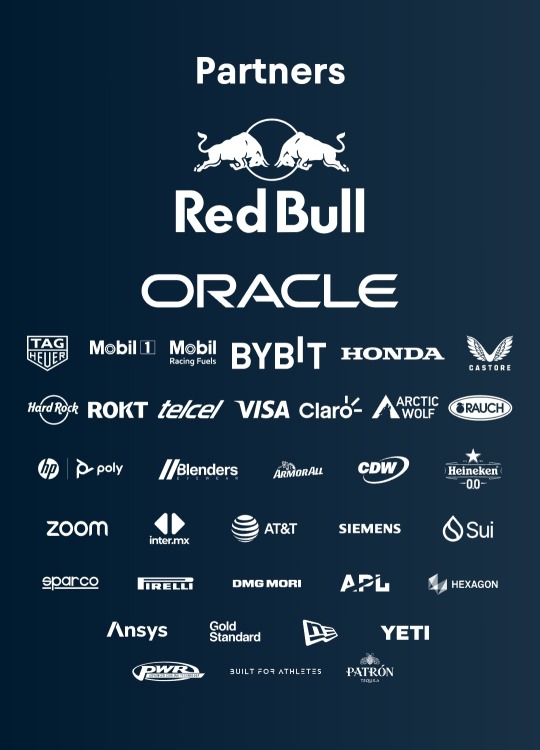
New sponsors: Yeti (American cooler manufacturer, joined later in 2023), APL (American footwear/athletic apparel manufacturer, joined later in 2023), CDW (American IT company, joined later in 2023), Sui (American tech app by Mysten Labs, joined later in 2023), Patron Tequila (Mexican alcoholic beverages company, joined later in 2023) 2024 data last update: 2024/02/15
Old sponsors that left: CashApp, Walmart, Therabody (American wellness technology company), Ocean Bottle (Norwegian reusable bottle manufacturer), PokerStars (Costa Rican gambling site), Alpha Tauri (? no info if they're official partners or not but Austrian clothing company made by Red Bull), BMC (Switzerland bicycle/cycling manufacturer), Esso (American fuel company, subsidiary of ExxonMobil), Hewlett Packard Enterprise (American technology company) 2023 data last update: 2023/03/07
More: Esso is a subsidiary of Mobil so there's possibility they merged or something
Scuderia Ferrari:
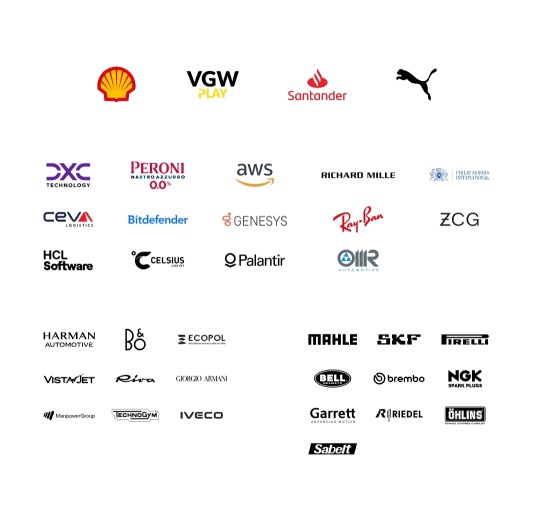
New sponsors: VGW Play (Australian tech game company, joined later in 2023), DXC Technology (American IT company, joined later in 2023), Peroni (Italian brewing company), Z Capital Group/ZCG (American private asset management/merchant bank company), Celsius (Swedish energy drink manufacturer) 2024 data last update: 2024/02/15
Old sponsors that left: Mission Winnow (American content lab by Phillip Morris International aka Marlboro), Estrella Garcia (Spanish alcoholic beverages manufacturer), Frecciarossa (Italian high speed train company) 2023 data last update: 2023/02/16
More: Mission Winnow is a part of Phillip Morris International. They are no longer listed as team sponsor but PMI is listed instead.
(starting here, 2023 data last update is 2023/02/23 and 2024 data last update is 2024/02/15)
McLaren F1 Team: (Only McLaren RACING's data is available idk if some of these are XE/FE team partners but anw..)
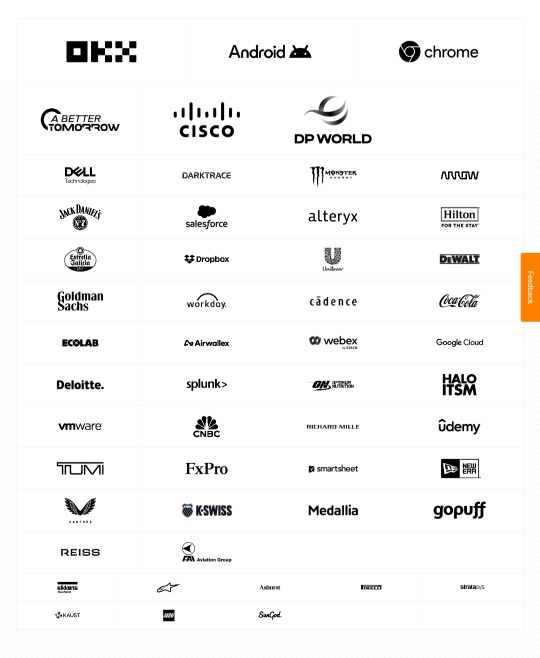
New sponsors: Monster Energy, Salesforce (American cloud based software company, joined later in 2023), Estrella Garcia (Spanish alcoholic beverages manufacturer), Dropbox (American file hosting company), Workday (American system software company, joined later in 2023), Ecolab (American water purification/hygiene company), Airwallex (Australian financial tech company), Optimum Nutrition (American nutritional supplement manufacturer), Halo ITSM (American software company, joined later in 2023), Udemy (American educational tech company, joined later in 2023), New Era (American cap manufacturer, joined in 2023), K-Swiss (American shoes manufacturer, joined later in 2023), Alpinestars (Italian motorsports safety equipment manufacturer)
Old sponsors that left: DP World (Emirati logistics company), EasyPost (American shipping API company), Immersive Labs (UK cybersecurity training company?), Logitech, Mind (UK mental health charity), PartyCasino (UK? online casino site), PartyPoker (American? gambling site), Sparco (Italian auto part & accessory manufacturer), Tezos (Switzerland crypto company)
Aston Martin Aramco F1 Team:

New sponsors: Valvoline (American retail automotives service company, joined later in 2023), NexGen (Canadian sustainable? fuel company), Banco Master (Brazilian digital banking platform, joined later in 2023), ServiceNow (American software company, joined later in 2023), Regent Seven Seas Cruise, Wolfgang Puck (Austrian-American chef and restaurant owner, joined later in 2023), Financial Times (British business newspaper), OMP (Italian racing safety equipment manufacturer), stichd (Netherlands fashion & apparel manufacturer)
Old sponsors that left: Alpinestars (Italian motorsports safety equipment manufacturer), crypto.com (Singaporean cryptocurrency company), ebb3 (UK? software company), Pelmark (UK fashion and apparel manufacturer), Peroni (Italian brewing company), Porto Seguro (Brazilian insurance company), Socios (Malta's blockchain-based platform), XP (Brazilian investment company)
Stake F1 Team (prev. Alfa Romeo):
???? Can't found their website (might be geoblocked in my country???)
BWT Alpine F1 Team:
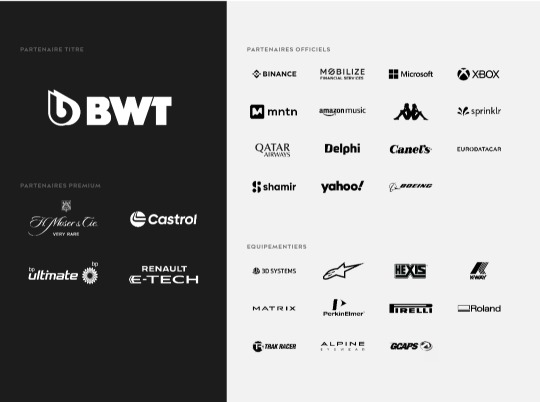
New sponsors: MNTN (American software company), H. Moser & Cie (Switzerland watch manufacturer), Amazon Music
Old sponsors that left: Bell & Ross (French watch company), Ecowatt (??? afaik French less-energy smthn smthn company), Elysium (French? American? Software company), KX (UK software company), Plug (American electrical equipment manufacturing company)
Visa CashApp RB F1 Team (prev. Scuderia Alpha Tauri):

New Sponsors: Visa, CashApp, Hugo Boss, Tudor, Neft Vodka (Austrian alcoholic beverages company), Piquadro (Italian luxury bag manufacturer)
Old sponsors that left: Buzz (?), Carl Friedrik (UK travel goods manufacturer), Flex Box (Hongkong? shipping containers manufacturer), GMG (Emirati global wellbeing company), RapidAPI (American API company)
Haas F1 Team:

New sponsors: New Era (American cap manufacturer, joined later in 2023)
Old sponsors that left: Hantec Markets (Hongkong capital markets company), OpenSea (American NFT/Crypto company)
Williams Racing:

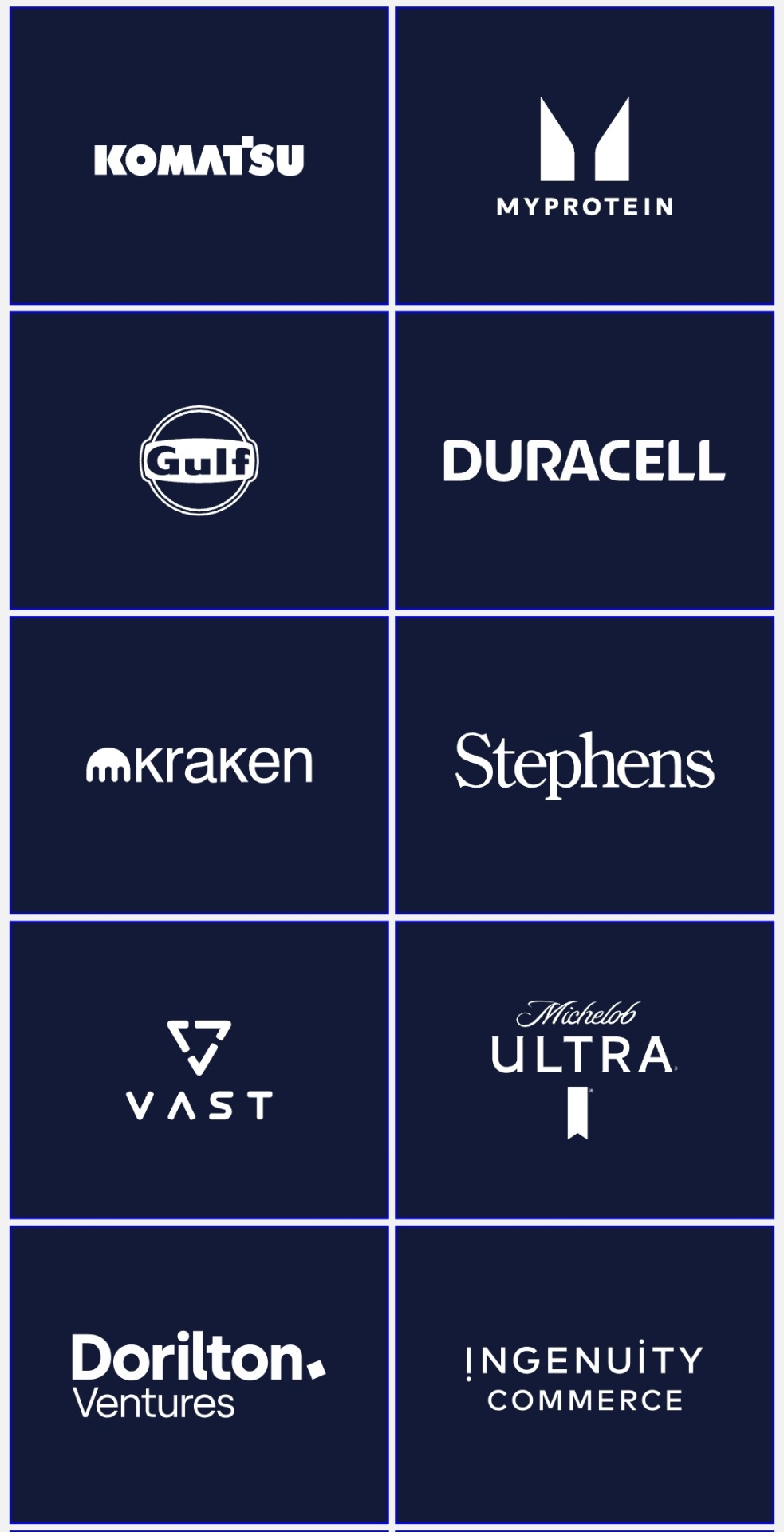
New sponsors: Komatsu, MyProtein (British bodybuilding supplement), Kraken (American crypto company, joined later in 2023), VAST Data (American tech company), Ingenuity Commerce (UK e-commerce platform), Puma (joined later in 2023)
Old sponsors that left: Acronis (Swiss software company), Bremont (British watch manufacturer), Dtex Systems (American? cybersecurity company), Financial Times (British business newspaper), Jumeirah Hotels & Resorts, KX (UK software company), OMP (Italian racing safety equipment manufacturer), PPG (American painting manufacturer), Umbro (English sports equipment manufacturer), Zeiss (German opticals/optometrics manufacturing company)
#mercedes amg petronas#red bull racing#scuderia ferrari#visa cash app rb#haas f1 team#mclaren f1#aston martin#alpine f1#williams racing#stake f1 team#f1#ari's rant#sponsor talks
42 notes
·
View notes
Text
Thailand Board of Investment
The Thailand Board of Investment (BOI) is a pivotal government agency tasked with promoting investment in Thailand, both from domestic and foreign sources. Established in 1966, the BOI plays a crucial role in driving economic growth, fostering innovation, and enhancing Thailand's competitiveness in the global market. By offering a range of incentives, streamlined services, and strategic support, the BOI attracts high-value investments across various sectors. This article provides an in-depth exploration of the BOI, covering its legal framework, incentive schemes, application process, and strategic considerations for investors.
Legal Framework and Mission of the BOI
The BOI operates under the Investment Promotion Act B.E. 2520 (1977), which grants it the authority to provide incentives and support to qualified investments. The BOI's mission is to:
Promote Investment: Attract domestic and foreign investment in targeted industries and regions.
Enhance Competitiveness: Strengthen Thailand's position as a regional hub for trade and investment.
Foster Innovation: Support research and development (R&D), technology transfer, and sustainable practices.
Facilitate Business: Streamline regulatory processes and provide comprehensive support services to investors.
The BOI is governed by a board chaired by the Prime Minister, with members from key ministries and private sector representatives, ensuring a balanced approach to investment promotion.
Key Incentives Offered by the BOI
The BOI offers a range of incentives to attract and support investments in targeted industries. These incentives are designed to reduce costs, enhance competitiveness, and facilitate business operations. Key incentives include:
1. Tax Incentives
Corporate Income Tax (CIT) Exemptions: Projects may receive CIT exemptions for up to 8 years, with possible extensions for projects in advanced technology or R&D.
Import Duty Exemptions: Exemptions on import duties for machinery, raw materials, and components used in production.
Dividend Tax Exemptions: Dividends paid from exempted profits are also exempt from taxation.
2. Non-Tax Incentives
Land Ownership: Foreign investors may own land for promoted projects, subject to BOI approval.
Work Permits and Visas: Simplified procedures for obtaining work permits and visas for foreign executives, experts, and technicians.
Repatriation of Funds: Permission to repatriate investment capital, profits, and dividends.
3. Sector-Specific Incentives
Targeted Industries: Enhanced incentives for industries such as biotechnology, digital technology, renewable energy, and advanced manufacturing.
Special Economic Zones (SEZs): Additional incentives for investments in SEZs, including infrastructure support and reduced regulatory requirements.
4. Additional Benefits
Investment Promotion Zones: Incentives for investments in designated zones, such as the Eastern Economic Corridor (EEC).
Green Initiatives: Additional benefits for projects that promote environmental sustainability and energy efficiency.
Targeted Industries and Strategic Sectors
The BOI focuses on promoting investments in industries that align with Thailand's economic development goals. Key targeted industries include:
Advanced Technology and Innovation:
Biotechnology, nanotechnology, and advanced materials.
Digital technology, including software development, data centers, and cybersecurity.
Sustainable Industries:
Renewable energy, such as solar, wind, and biomass.
Environmental management and waste-to-energy projects.
High-Value Manufacturing:
Automotive and aerospace industries.
Electronics and electrical appliances.
Services and Infrastructure:
Tourism and hospitality, including medical tourism.
Logistics and transportation, particularly in the EEC.
Agriculture and Food Processing:
High-tech agriculture and food innovation.
Halal food production and export.
Application Process for BOI Promotion
The process of applying for BOI promotion involves several steps, each requiring careful preparation and adherence to regulatory requirements. Below is a detailed breakdown:
1. Determine Eligibility
Identify the appropriate BOI category and incentives based on your business activities and investment plans.
Ensure that your project aligns with the BOI's targeted industries and strategic goals.
2. Prepare Required Documents
Business Plan: Detailed plan outlining the project's objectives, scope, and financial projections.
Financial Statements: Audited financial statements for existing companies or pro forma financials for new ventures.
Technical Specifications: Details of machinery, technology, and production processes.
Environmental Impact Assessment (EIA): For projects with potential environmental impacts.
3. Submit the Application
Submit the application through the BOI's online portal or at a BOI office.
Pay the application fee, which varies depending on the project size and complexity.
4. Review and Approval
The BOI reviews the application, including the project's feasibility, economic impact, and compliance with regulations.
Additional information or clarifications may be requested during the review process.
5. Receive BOI Promotion Certificate
If approved, the BOI issues a Promotion Certificate, detailing the incentives and conditions.
The certificate must be registered with the relevant government agencies to activate the incentives.
6. Compliance and Reporting
BOI-promoted projects are subject to periodic reporting and compliance checks.
Ensure that all conditions and requirements are met to maintain the incentives.
Strategic Considerations for Investors
To maximize the benefits of BOI promotion, investors should consider the following strategies:
Sector Alignment:
Align your investment with the BOI's targeted industries and strategic goals.
Research the specific incentives and requirements for your sector.
Comprehensive Planning:
Develop a detailed business plan that outlines the project's objectives, scope, and financial projections.
Consider the long-term impact of the investment and potential for expansion.
Legal and Regulatory Compliance:
Ensure compliance with Thai laws and regulations, including environmental and labor standards.
Seek legal advice to navigate the complexities of BOI promotion and regulatory requirements.
Partnerships and Collaboration:
Form strategic partnerships with local businesses, research institutions, and government agencies.
Leverage local expertise and networks to enhance the project's success.
Sustainability and Innovation:
Incorporate sustainable practices and innovative technologies into the project.
Explore opportunities for R&D and technology transfer to enhance competitiveness.
Recent Developments and Trends
Thailand's investment landscape is evolving, with several trends and developments shaping the BOI's strategies:
Eastern Economic Corridor (EEC):
The EEC is a flagship initiative to develop the eastern region into a hub for advanced industries and innovation.
The BOI offers enhanced incentives for investments in the EEC, including infrastructure support and streamlined regulations.
Digital Transformation:
The BOI is promoting investments in digital technology, including artificial intelligence, blockchain, and fintech.
Digital infrastructure projects, such as data centers and smart cities, are prioritized.
Sustainability and Green Initiatives:
There is growing emphasis on sustainable investments, including renewable energy, waste management, and green manufacturing.
The BOI offers additional incentives for projects that promote environmental sustainability.
Post-Pandemic Recovery:
The BOI is implementing measures to support economic recovery, including incentives for healthcare, biotechnology, and supply chain resilience.
Efforts to attract foreign investment and boost domestic industries are intensified.
Conclusion
The Thailand Board of Investment (BOI) is a vital institution for promoting investment and driving economic growth in Thailand. By offering a range of incentives, streamlined services, and strategic support, the BOI attracts high-value investments across various sectors. Understanding the BOI's legal framework, incentive schemes, and application process is essential for investors seeking to capitalize on the opportunities in Thailand. As the country continues to evolve its investment landscape, staying informed and proactive will remain key to achieving long-term success. Whether you are a domestic entrepreneur or a foreign investor, the BOI provides a robust platform for realizing your investment goals and contributing to Thailand's economic development.
#thailand#thai#corporate#thailandboardofinvestment#thailandboi#thaiboi#boi#boardofinvestment#corporateinthailand#businessinthailand#business
4 notes
·
View notes
Note
On the topic of IT… I’m also very interested in going into IT as I’m a compsci major but we’ve mostly dealt with software and cloud building which is a good basis but I’m wondering if there’s other courses you’d recommend for someone like me ?
Hay, girl, hay!
Would definitely recommend squeezing in data structure and programming classes. You make yourself so much more marketable when you understand how to store and manipulate data and coding if you intend to work for any major company in the future (Amazon, Google, etc). Both also come in handy not just in the IT world if you, say, decide to get into Logistics (warehouse management, supply, transportation, etc.) and coding is a field you can get a job in without having a degree (not always. Some positions will still require you to have your Bachelor’s).
I took the cybersecurity route because, of course, that’s where everyone said the money was. Yeah. You don’t start with 100K. Don’t believe the hype. You work your way up to that. But you can posture yourself for a decent position if you have base-level certifications, too (if you want to shell out money to take the exams). Some companies will also pay you to go to school to get your certifications (A+, Net+, Sec+) if you get that position.
It all depends on the route you want to take. And experience. Experience is key. I’m only more marketable than someone with a Bachelor’s in Cybersecurity fresh out of school because I’ve had more time to apply what I’ve learned and have certifications to put me at a decent, entry-level job.
I would recommend doing some research on where you’d like to go in the IT realm. It’s such a broad umbrella of fields, and you don’t want to posture yourself to work as like a web developer or data analyst if you’ve spent most of your time on fiber optics. I’m sorry. I know this was all over the place. I’m hyper off matcha and fumes. I hope that made sense, and I hope I was able to help a little.
#mail time#also still have all my training aids from school if you ever decide to pursue a+ sec+ or casp
2 notes
·
View notes
Text
Cybersecurity in Logistics: Safeguarding Dubai’s Freight Industry
Dubai is a world logistics center, and it is easy to export and import between the West and East. Dubai freight forwarding is a vital part of worldwide supply chains with its geostrategic location, cutting-edge infrastructure, and universal use of technology.
The Growing Cyber Threats in Freight Forwarding
The freight forwarding and logistics sector is also becoming more under the radar of cybercriminals.
Common threats are:
Phishing Attacks: False emails impersonating legitimate companies trick employees into revealing confidential details.
Ransomware: nefarious software programs encrypting data
Data breaches: unauthorized access into confidential business and customer data.
Supply Chain Attacks: Hackers are targeting third-party partners or suppliers to gain access to systems.
IoT vulnerabilities: Internet-of-Things devices deployed within logistics can be targeted in order to gain access to systems.
Why Cybersecurity is Essential for Freight Forwarding
A cybersecurity a data breach within freight forwarding can lead to financial loss, business disruption, reputational damage, and legal liability. Since Dubai is a global logistics hub, organizations must prioritize cybersecurity in order to maintain data integrity secure sensitive customer and shipment data.
Avoid Losses of Funds: Avoid careless payments, fraud, and unauthorized transfers.
Follow Laws: Follow the UAE cybersecurity law and international standards.
Maintain Business Continuity—Preserve smooth operations without unexpected disruption.
Need to enhance digital security in Dubai.
Dubai companies need to do the following to obtain freight forwarding:
Employee Training & Awareness
Need to conduct regular cybersecurity training.
Train staff on phishing attempts detection.
Strong Authentication & Access Controls
Implement multiple-factor authentication (MFA) for system access.
Restrict access to sensitive data based on role and responsibility.
Regular Security Audits & Risk Assessments
Conduct regular cybersecurity audits to identify vulnerabilities.
Utilize a risk assessment framework to prevent potential threats.
Advanced Threat Detection & Response
Deploy intrusion detection and prevention systems (IDPS).
Monitor network traffic for anomalies and respond rapidly to threats.
Incident Response & Recovery Plan
Develop a comprehensive incident response plan.
Regularly back up critical data and drill recovery procedures.
Conclusion
As Dubai becomes a global logistics hub, freight forwarding cybersecurity threats also increase. Companies must have effective security measures in place to secure their supply chain, safeguard information, and prevent cyberattacks. With proactive strategies, companies can establish trust, ensure smooth operations, and sustain long-term success in the business.
#logistics software#freight software#freight forwarding software#software for freight forwarding software#wms#warehouse management system#freight logistics software#freight forwarder software#warehouse software#freight forwarding system
2 notes
·
View notes
Text

When it comes to selling your business, Vista is the best thing since sliced bread. That's because our process is designed to make selling your business simple. Give us a try and find out why!!
#business#small business#smb#information technology#it#cybersecurity#msp#mssp#it services#security#software#technology#staffing#hvac#plumbing#manufacturing#logistics#transportation#sliced bread
1 note
·
View note
Text
IT Companies in Dubai: Powering Innovation and Business Growth
Dubai has quickly emerged as a global technology and innovation hub, with businesses from across the globe flocking to the city. With its sophisticated infrastructure and government-friendly policies, the city boasts some of the best IT companies in Dubai that offer innovative solutions to businesses of all scales. From Dubai IT support companies to Dubai full-service IT service providers, the technology scene is booming, allowing businesses to adopt digital transformation with ease.

Why Dubai is a Technology Hub
Its strategic position, pro-business measures, and technology investments place Dubai as a competitive destination for IT companies in Dubai. The UAE Vision 2030 and the Dubai Smart City project spur innovation, making technology advancement-driven sectors competitive.
Services Provided by IT Companies in Dubai
IT companies in Dubai provide various services such as:
IT Support Services – Necessary for businesses to ensure smooth operations.
Cloud Computing Solutions – Supporting scalability and remote access.
Cybersecurity Services – Securing businesses against new cyber threats.
Software Development – Customized applications to automate business processes.
Managed IT Services – Complete IT management for business enterprises.
Top IT Companies in Dubai
Some of the Top IT companies in Dubai are popular for their innovative, expert, and dependable service. Some of the top-rated IT companies in Dubai provide custom IT solutions so that businesses can remain competitive in the digital world. With an array of services across various sectors, these organizations serve startups and established businesses in search of latest IT support.
How IT Support Companies in Dubai Benefit Businesses
Accurate the It Support Companies in Dubai is essential for business continuity. Dubai has IT support firms that offer round-the-clock service, ensuring minimal downtime and increased productivity. From hardware troubleshooting to cloud solutions, businesses turn to these firms for operational effectiveness.
Selecting the Best IT Service Providers in Dubai
The selection of the best IT service providers in Dubai is based on a number of factors, including:
Industry-specific IT solutions expertise.
Reputation and history of success.
Ability to provide tailored IT solutions.
Cost and scalability of the services.
Future of Dubai-based IT Companies
With technology rapidly changing, IT companies in Dubai are adopting emerging technologies like artificial intelligence, blockchain, and IoT. With their emphasis on digital transformation, these companies are likely to shape the future of regional businesses.

Conclusion
Dubai’s dynamic IT industry is instrumental in driving digital transformation across sectors. From IT support companies in Dubai to Top IT companies Dubai, businesses have access to world-class technological expertise. As the city continues to innovate, tech companies in Dubai will remain at the forefront of global advancements, ensuring businesses stay competitive in the ever-evolving digital landscape.
Frequently Asked Questions (FAQ) About IT Companies in Dubai
1. Which are the most prominent IT firms in Dubai?
There are several prominent IT firms in Dubai with a wide range of services that include cybersecurity, cloud computing, and managed IT support. These are the top IT firms in Dubai, famous for their professional services in digital transformation and new-age solutions catering to businesses across all sizes.
2. In what ways do Dubai IT support firms assist companies?
IT support firms in Dubai offer critical services like troubleshooting, network security, and system maintenance. Their technical expertise helps businesses have minimal downtime and improved operational efficiency.
3. Which industries do IT service providers in Dubai serve?
IT service providers in Dubai serve a range of industries like finance, healthcare, retail, logistics, and hospitality. They provide tailored solutions according to the specific technology requirements of each industry.
4. How to select the best IT companies in Dubai for your business?
When choosing between the top IT firms in Dubai, look at industry experience, services provided, customer feedback, and solution scalability. The appropriate choice will be based on your business requirements and growth prospects.
5. Are Dubai IT companies reliable for cybersecurity services?
Yes, there are numerous IT companies in Dubai that specialize in cybersecurity and provide data protection, network security, and risk management services. These companies assist businesses in protecting their online assets from cyber attacks.
6. Why should businesses opt for a tech company in Dubai?
A Tech company in Dubai provides the most up-to-date solutions supplemented by the newest innovations. With the support of the government and state-of-the-art infrastructure, these companies make the businesses competitive in the online age.
2 notes
·
View notes
Text
Top 7 Benefits of IT Staff Augmentation Services for Growing Businesses
In today's fast-evolving digital landscape, growing businesses are under constant pressure to innovate quickly, manage costs, and deliver exceptional customer experiences. One of the biggest challenges faced by tech-driven companies is finding skilled IT professionals—quickly and affordably. That’s where IT Staff Augmentation Services come into play.
Whether you're launching a new product, upgrading infrastructure, or expanding into new markets, IT staff augmentation gives you the flexibility and expertise to meet your goals without the long-term commitments of full-time hiring.
In this blog, we’ll explore the top 7 benefits of IT staff augmentation services and how your business can leverage this model to thrive in a competitive environment.
1. Access to a Global Talent Pool
One of the key advantages of IT staff augmentation is instant access to a vast, global talent pool. Whether you need software developers, cloud engineers, or cybersecurity specialists, augmentation allows you to hire top-tier professionals with the specific skills your project requires.
Why it matters: Your internal team may not have all the capabilities you need—but staff augmentation ensures that talent gaps don’t slow you down.
2. Scalability and Flexibility
Every business goes through periods of rapid growth or shifting project demands. Staff augmentation services allow you to scale your team up or down quickly, depending on project requirements, budget changes, or timelines.
Why it matters: This flexibility helps growing companies respond to market demands without overcommitting to long-term hires.
3. Cost-Effective Resource Management
Recruiting, onboarding, and training full-time IT employees is expensive and time-consuming. With staff augmentation, you eliminate overhead costs such as benefits, insurance, and retirement plans, while still gaining access to skilled professionals.
Why it matters: You can allocate budget efficiently and invest in growth areas rather than in-house hiring logistics.
4. Faster Project Delivery
IT staff augmentation enables faster team assembly and project initiation. You can skip lengthy hiring cycles and start working with professionals who are already trained and ready to contribute from day one.
Why it matters: Speed-to-market is crucial for startups and growing companies. Augmentation lets you launch, scale, or iterate faster than ever.
5. Reduced Hiring Risks
Hiring a full-time employee is a long-term investment, and if the fit isn't right, it can lead to lost time and resources. With staff augmentation, you have the flexibility to assess performance before committing or replacing talent without HR complications.
Why it matters: Minimize risk and maintain productivity without the liabilities of permanent contracts.
6. Focus on Core Business Functions
When your internal team is overloaded with tasks outside their core roles, innovation and strategic planning take a back seat. Augmented staff can take on specialized tasks, freeing up your core team to focus on critical business objectives.
Why it matters: Delegating effectively means your internal talent stays focused on what they do best.
7. Support for Specialized Projects
Whether you're building a new mobile app, migrating to the cloud, or deploying AI solutions, these projects often require niche skillsets. IT staff augmentation allows you to bring in domain-specific experts for the duration of your project.
Why it matters: You get access to high-level expertise exactly when and where you need it—without long-term commitments.
Quick Comparison Table: Staff Augmentation vs. Traditional Hiring
Factor
Staff Augmentation
Traditional Hiring
Time to Onboard
1-2 weeks
1-3 months
Cost Efficiency
High
Moderate
Scalability
Easy to scale up/down
Difficult
Commitment Level
Short to mid-term
Long-term
Specialized Skills
Readily available
May require training
Hiring Risk
Low
High
Final Words
In a world where speed, agility, and expertise are the currency of success, IT Staff Augmentation Services have become a strategic tool for growing businesses. From cost efficiency and access to global talent to faster project delivery and minimized risk—staff augmentation empowers you to stay ahead of the competition without stretching your internal resources thin.
At Velloni, we specialize in connecting businesses with top IT professionals who bring experience, skill, and innovation to the table. Whether you're expanding your team, executing complex tech projects, or simply want to scale smartly—Velloni is your go-to partner.
✅ Ready to Elevate Your IT Team?
Let us help you scale with confidence. Get in touch with Velloni today to learn how our IT Staff Augmentation Services can empower your business growth.
1 note
·
View note
Text
Organizations Market Insights: 7 Game-Changing Innovations to Watch

Explosive Market Growth Driven by Institutional Demand and B2B Innovation
The global organizations market is entering a transformative phase, with projections estimating a surge from USD 7.19 billion in 2022 to over USD 1,374.15 billion by 2031, registering a CAGR of 35.5% from 2024 to 2031. This rapid ascent is propelled by the rising demand across public, private, and non-profit sectors for comprehensive operational solutions, digitization, and long-term service integrations.
This organizations market encompasses a diverse array of business-to-business (B2B) interactions, with organizations procuring vast volumes of goods and services essential for internal functions and external service delivery. The key distinguishing feature of this sector is its emphasis on value-driven procurement, strategic supplier relationships, and multi-layered decision-making structures.
Request Sample Report PDF (including TOC, Graphs & Tables): https://www.statsandresearch.com/request-sample/40468-global-organizations-market
Organizations Market Segmentation: Diverse Needs, Unified Demand
By Organizational Type
Private Sector
Organizations in this segment prioritize return on investment, agility, and innovation. Tech firms, manufacturers, and service providers drive procurement, investing in automation tools, logistics, enterprise software, and cybersecurity solutions.
Public Sector
Governments at all levels invest in infrastructure modernization, citizen services, and digital governance, acquiring long-term solutions in healthcare, education, defense, and transportation.
Non-Profit Sector
Focused on mission delivery over profit, these organizations allocate budgets toward solutions that enhance social impact, such as community management systems, sustainability technologies, and donor engagement platforms.
Get up to 30%-40% Discount: https://www.statsandresearch.com/check-discount/40468-global-organizations-market
By Product and Services
Raw Materials: Core components like chemicals, metals, and polymers that feed manufacturing and construction.
Finished Goods: Includes machinery, IT hardware, medical devices, and other end-use assets.
Durable Goods: Vehicles, production machinery, and infrastructure components.
Consumables: Everyday operational inputs—paper, lab reagents, medical disposables.
Service Verticals:
Consulting: Strategic and operational optimization across sectors.
IT Services: Digital transformation, cybersecurity, cloud infrastructure, SaaS.
Maintenance and Support: Preventive servicing and troubleshooting to maximize uptime.
Training and Education: Skill enhancement aligned with emerging tech and regulatory requirements.
Sector-Specific Applications: Customization at Scale
Healthcare
Technology is redefining patient engagement, diagnostics, and operational workflows. Investments in Electronic Health Records (EHRs), medical IoT devices, and AI-powered diagnostic tools are pivotal.
Education
Demand for Learning Management Systems (LMS), virtual classrooms, and administrative software is intensifying as institutions modernize and scale their operations globally.
Finance
Financial organizations are deploying advanced analytics, fraud detection systems, and compliance engines to manage increasingly complex portfolios and regulatory landscapes.
Manufacturing
Driven by Industry 4.0, manufacturers are integrating MES systems, automation robotics, supply chain monitoring, and predictive maintenance platforms.
End-User Landscape: Decision-Making Dynamics and Tailored Solutions
Enterprises
Large-scale operations demand integrated ecosystems—ERP, CRM, HRM systems, and IoT networks—all with cross-border functionality and data analytics capabilities.
Small and Medium Businesses (SMBs)
Cost-effective, scalable solutions are paramount. Cloud-based services, modular ERP systems, and affordable IT support are highly sought-after.
Government Agencies
Prioritizing transparency, efficiency, and citizen-centric services, agencies procure enterprise-grade digital infrastructure, secure data platforms, and AI governance tools.
Educational Institutions
A shift towards smart campuses and digitized learning ecosystems is catalyzing demand for IT infrastructure, real-time student tracking systems, and data-driven learning analytics.
Competitive Ecosystem: Leaders Shaping Organizational Digitization
Prominent players are pioneering the evolution of the organizations market, leveraging robust product portfolios, cloud ecosystems, and international presence. These include:
IBM – Cognitive business and AI-driven transformation.
Microsoft – Cloud-first enterprise solutions and productivity software.
Oracle – Database systems and ERP platforms.
SAP – Business process optimization and automation.
Salesforce – CRM innovation and customer experience platforms.
Dell Inc. – Scalable IT infrastructure.
Cisco Systems, Inc. – Networking and security.
Amazon Web Services (AWS) – Cloud computing and AI services.
Accenture – Strategy consulting and digital execution.
Hewlett Packard Enterprise (HPE) – Edge-to-cloud platforms and intelligent edge.
These firms, alongside emerging disruptors, are aggressively competing through innovation, ecosystem partnerships, and vertical-specific customizations.
Regional Organizations Market Dynamics: Global Influence, Local Adaptation
North America
Characterized by early technology adoption and mature infrastructure, with the U.S. leading government digitization, cloud migration, and enterprise IT transformation.
Asia-Pacific
Rapid industrial growth and digital inclusion initiatives in China, India, Japan, and ASEAN nations are catalyzing exponential market expansion.
Europe
Focus on compliance, sustainable procurement, and smart public services underpins robust demand in Germany, UK, France, and Italy.
Middle East & Africa
Smart city initiatives and public-private partnerships are pivotal to regional growth, particularly in the GCC nations.
South America
Increasing investments in public services and education, notably in Brazil, are enhancing the role of digital solutions in regional development.
Organizations Market Forecast Through 2031
This growth trajectory reflects the unprecedented convergence of digital transformation, globalization of service procurement, and institutional modernization. Procurement behavior is increasingly favoring long-term contracts, as-a-service models, and modular solution architectures, facilitating both adaptability and ROI.
Strategic Imperatives for Organizations Market Participants
Vertical Specialization: Offer sector-specific configurations for healthcare, finance, manufacturing, and public services.
Sustainability Integration: Align procurement solutions with ESG goals and circular economy practices.
AI and Automation: Deploy intelligent systems that reduce human error and increase operational speed.
Cloud and Edge Synergy: Combine the scalability of cloud with the real-time benefits of edge computing.
Cybersecurity First: Integrate zero-trust security architecture from procurement to deployment.
Purchase Exclusive Report: https://www.statsandresearch.com/enquire-before/40468-global-organizations-market
Conclusion: The Future of Organizational Procurement
The organizations market is on an unrelenting growth trajectory, reshaping how institutions across sectors and regions invest in infrastructure, services, and digital tools. To remain competitive, stakeholders must embrace tailored innovation, ecosystem integration, and client-centric strategies. The era of reactive procurement is over—strategic, proactive, and data-driven engagement defines the future of organizational marketplaces.
Our Services:
On-Demand Reports: https://www.statsandresearch.com/on-demand-reports
Subscription Plans: https://www.statsandresearch.com/subscription-plans
Consulting Services: https://www.statsandresearch.com/consulting-services
ESG Solutions: https://www.statsandresearch.com/esg-solutions
Contact Us:
Stats and Research
Email: [email protected]
Phone: +91 8530698844
Website: https://www.statsandresearch.com
1 note
·
View note
Text
FDI in India: Unleashing Growth Potential in 2024

Introduction
Foreign Direct Investment (FDI) has been a cornerstone of India's economic growth, driving industrial development, technological advancement, and job creation. As we move into 2024, the FDI landscape in India is poised for substantial growth, bolstered by a favorable policy environment, a burgeoning consumer market, and strategic government initiatives. This blog delves into the potential of FDI in India for 2024, examining the key sectors attracting investment, the regulatory framework, and the strategies investors can employ to navigate this dynamic market.
The Significance of FDI in India
FDI is crucial for India’s economic progress, providing the capital, technology, and expertise needed to enhance productivity and competitiveness. It facilitates the integration of India into the global economy, stimulates innovation, and creates employment opportunities. Over the past decade, India has emerged as one of the top destinations for FDI, reflecting its economic resilience and strategic importance.
Historical Context and Recent Trends
India's FDI inflows have shown a consistent upward trend, reaching record levels in recent years. According to the Department for Promotion of Industry and Internal Trade (DPIIT), India attracted FDI inflows worth $81.72 billion in 2021-22, highlighting its strong appeal among global investors. The sectors that have traditionally attracted significant FDI include services, telecommunications, computer software and hardware, trading, construction, and automobiles.
Key Factors Driving FDI in India
1. Economic Growth and Market Size
India's economy is one of the fastest-growing in the world, with a projected GDP growth rate of around 6-7% in 2024. The country’s large and youthful population offers a vast consumer base, making it an attractive market for foreign investors. The rising middle class and increasing disposable incomes further fuel demand across various sectors.
2. Strategic Government Initiatives
The Indian government has implemented several initiatives to make the country more investor-friendly. Programs like 'Make in India,' 'Digital India,' and 'Startup India' are designed to boost manufacturing, digital infrastructure, and entrepreneurial ventures. These initiatives, coupled with reforms in labor laws and ease of doing business, create a conducive environment for FDI.
3. Infrastructure Development
Significant investments in infrastructure development, including roads, railways, ports, and urban infrastructure, enhance connectivity and logistics efficiency. The development of industrial corridors and smart cities further improves the attractiveness of India as an investment destination.
4. Favorable Regulatory Environment
India has progressively liberalized its FDI policy, allowing 100% FDI in most sectors under the automatic route. This means that foreign investors do not require prior government approval, simplifying the investment process. The government has also streamlined regulatory procedures and improved transparency to facilitate ease of doing business.
Key Sectors Attracting FDI in 2024
1. Technology and Digital Economy
The technology sector continues to be a magnet for FDI, driven by India’s growing digital ecosystem, skilled workforce, and innovation capabilities. Investments in software development, IT services, and emerging technologies like artificial intelligence, blockchain, and cybersecurity are expected to surge.
2. Manufacturing and Industrial Production
The 'Make in India' initiative aims to transform India into a global manufacturing hub. Key sectors attracting FDI include electronics, automobiles, pharmaceuticals, and renewable energy. The Production-Linked Incentive (PLI) schemes introduced by the government provide financial incentives to boost manufacturing and attract foreign investment.
3. Healthcare and Biotechnology
The COVID-19 pandemic has underscored the importance of healthcare infrastructure and innovation. India’s pharmaceutical industry, known for its generic drug production, continues to attract substantial FDI. Additionally, biotechnology and medical devices are emerging as significant sectors for investment.
4. Infrastructure and Real Estate
Infrastructure development is critical for sustaining economic growth. Sectors like transportation, logistics, urban development, and real estate offer significant investment opportunities. The government's focus on developing smart cities and industrial corridors presents lucrative prospects for foreign investors.
5. Renewable Energy
With a commitment to achieving net-zero emissions by 2070, India is focusing on renewable energy sources. The solar, wind, and hydroelectric power sectors are witnessing substantial investments. The government's policies and incentives for green energy projects make this a promising area for FDI.
Regulatory Framework for FDI in India
Understanding the regulatory framework is essential for investors looking to enter the Indian market. The key aspects of India's FDI policy include:
1. FDI Policy and Routes
FDI in India can be routed through the automatic route or the government route. Under the automatic route, no prior approval is required, and investments can be made directly. Under the government route, prior approval from the concerned ministries or departments is necessary. The sectors open to 100% FDI under the automatic route include:
- Infrastructure
- E-commerce
- IT and BPM (Business Process Management)
- Renewable Energy
2. Sectoral Caps and Conditions
While many sectors allow 100% FDI, some have sectoral caps and conditions. For example:
- Defense: Up to 74% FDI under the automatic route, and beyond 74% under the government route in certain cases.
- Telecommunications: Up to 100% FDI allowed, with up to 49% under the automatic route and beyond that through the government route.
- Insurance: Up to 74% FDI under the automatic route.
3. Regulatory Authorities
Several regulatory authorities oversee FDI in India, ensuring compliance with laws and policies. These include:
- Reserve Bank of India (RBI): Oversees foreign exchange regulations.
- Securities and Exchange Board of India (SEBI): Regulates investments in capital markets.
- Department for Promotion of Industry and Internal Trade (DPIIT): Formulates and monitors FDI policies.
4. Compliance and Reporting Requirements
Investors must comply with various reporting requirements, including:
- Filing of FDI-related returns: Periodic filings to RBI and other regulatory bodies.
- Adherence to sector-specific regulations: Compliance with industry-specific norms and guidelines.
- Corporate Governance Standards: Ensuring adherence to governance standards as per the Companies Act, 2013.
Strategies for Navigating the FDI Landscape
1. Thorough Market Research
Conducting comprehensive market research is crucial for understanding the competitive landscape, consumer behavior, and regulatory environment. Investors should analyze market trends, identify potential risks, and evaluate the long-term viability of their investment.
2. Partnering with Local Entities
Collaborating with local businesses can provide valuable insights into the market and help navigate regulatory complexities. Joint ventures and strategic alliances with Indian companies can facilitate market entry and expansion.
3. Leveraging Government Initiatives
Tapping into government initiatives like 'Make in India' and PLI schemes can provide financial incentives and support for setting up manufacturing units and other projects. Staying updated on policy changes and leveraging these initiatives can enhance investment returns.
4. Ensuring Legal and Regulatory Compliance
Compliance with local laws and regulations is paramount. Engaging legal and financial advisors with expertise in Indian regulations can ensure that all legal requirements are met. This includes obtaining necessary approvals, adhering to reporting norms, and maintaining corporate governance standards.
5. Focusing on Sustainable Investments
Given the global emphasis on sustainability, investments in green technologies and sustainable practices can offer long-term benefits. The Indian government’s focus on renewable energy and sustainable development provides ample opportunities for environmentally conscious investments.
Conclusion
India's FDI landscape in 2024 is ripe with opportunities across various sectors, driven by robust economic growth, strategic government initiatives, and a favorable regulatory environment. However, navigating this dynamic market requires a deep understanding of the legal and regulatory framework, thorough market research, and strategic partnerships.
For investors looking to unleash the growth potential of their investments in India, staying informed about policy changes, leveraging government incentives, and ensuring compliance with local laws are critical. By adopting a strategic approach and focusing on sustainable investments, foreign investors can tap into the immense opportunities offered by the Indian market and contribute to its economic transformation.
In conclusion, FDI in India in 2024 presents a compelling opportunity for global investors. With the right strategies and guidance, investors can navigate the complexities of the Indian market and achieve significant growth and success.
This post was originally published on: Foxnangel
#fdi in india#fdi investment in india#foreign direct investment in india#economic growth#foreign investors#startup india#pli schemes#renewable energy#indian market#foxnangel
2 notes
·
View notes
Text
The Evolution and Impact of ERP Software in the UAE: A Comprehensive Analysis
ERP stands for Enterprise Resource Planning. It is a type of software system that integrates and manages core business processes and functions within an organization. ERP software typically provides a centralized database and a suite of applications that automate and streamline business activities across various departments such as finance, human resources, supply chain management, manufacturing, sales, and customer service.
In the fast-paced landscape of business operations, efficient management of resources and information is critical for success. Enterprises in the United Arab Emirates (UAE) have witnessed a remarkable transformation in their operational efficiency and competitiveness through the adoption of Enterprise Resource Planning (ERP) software. This article delves into the evolution, benefits, challenges, and future trends of ERP software within the UAE context.
In recent decades, Enterprise Resource Planning (ERP) software has played a transformative role in how businesses in the United Arab Emirates (UAE) operate and manage their resources. This article delves into the evolution, adoption, and impact of ERP systems within the UAE's business landscape. By exploring the unique challenges and opportunities presented by the UAE's dynamic economy, we can better understand how ERP software has become an indispensable tool for organizations seeking efficiency, integration, and scalability.
Evolution of ERP Software
The adoption of ERP software in the UAE mirrors global trends but is uniquely shaped by regional business requirements and technological advancements. In the early 2000s, ERP systems gained traction among larger corporations seeking to streamline their complex processes. Major multinational ERP providers like SAP, Oracle, and Microsoft Dynamics established a strong presence in the region, catering to diverse industry needs including finance, manufacturing, retail, and logistics.
A notable development in recent times is the movement towards cloud-centric ERP solutions.This transition offers scalability, flexibility, and cost-effectiveness, allowing businesses in the UAE to manage their operations more efficiently. Local ERP vendors have also emerged, offering tailored solutions that cater specifically to the nuances of the UAE market, such as compliance with local regulations and cultural practices.
Challenges and Obstacles
Despite the numerous benefits, ERP implementation in the UAE is not devoid of challenges. One prominent obstacle is the high initial investment required for ERP deployment, including software licensing, customization, and training costs. For smaller businesses, this financial commitment can be prohibitive, leading to slower adoption rates among SMEs.
Cultural factors and change management also pose challenges. Embracing new technology often requires a shift in organizational culture and employee mindsets. Resistance to change, coupled with the need for extensive training, can hinder the successful implementation of ERP systems in the UAE.
Furthermore, data security and privacy concerns are paramount, especially in light of stringent regulatory frameworks such as the UAE's Data Protection Law. Ensuring compliance with local data protection regulations adds complexity to ERP deployment, necessitating robust cybersecurity measures and data governance protocols.
The Business Landscape of the UAE
The UAE is renowned for its vibrant economy, diversified industries, and strategic geographical location. Over the years, the country has emerged as a global business hub attracting multinational corporations, SMEs, and startups alike. Key sectors such as finance, real estate, construction, logistics, tourism, and manufacturing contribute significantly to the nation's GDP. However, this diversification has also brought complexities in managing business operations efficiently.
The Emergence of ERP Solutions
As businesses in the UAE expanded and diversified, traditional methods of managing operations became inadequate. The need for integrated systems that could streamline processes across departments led to the rise of ERP solutions. Initially developed to manage manufacturing processes, ERP systems evolved to encompass finance, human resources, supply chain, customer relationship management, and more. This evolution mirrored the growth and diversification of UAE businesses.
Factors Driving ERP Adoption
Several factors have fueled the adoption of ERP software among businesses in the UAE:
Global Competition: The UAE's aspiration to compete on a global scale necessitated advanced operational efficiencies that ERP systems could deliver.
Regulatory Compliance: The UAE's regulatory environment, including VAT implementation, required robust financial and reporting capabilities that ERP systems could provide.
Scalability: With rapid economic growth, businesses needed scalable solutions to manage increasing complexities.
Integration Needs: As businesses diversified, the need for seamless integration across functions became crucial.
Challenges in ERP Implementation
While the benefits of ERP systems are substantial, implementing them poses challenges:
Cultural Factors: Embracing technological change and adopting new systems can face resistance due to cultural factors.
Resource Constraints: SMEs may struggle with the limited resources required for ERP implementation and customization.
Data Security and Privacy: The UAE's focus on data security and privacy necessitates robust ERP solutions compliant with local regulations.
Impact of ERP on UAE Businesses
The impact of ERP software on businesses in the UAE has been profound:
Improved Efficiency: Streamlined processes lead to increased productivity and reduced operational costs.
Enhanced Decision Making: Real-time data availability empowers businesses to make informed decisions.
Better Customer Experience: Integrated systems ensure seamless customer interactions and improved service delivery.
Regulatory Compliance: ERP systems aid in meeting regulatory requirements efficiently.
Key ERP Players in the UAE
Several global and regional ERP providers cater to the UAE market, offering tailored solutions to meet local business needs. Major players include SAP, Oracle, Microsoft Dynamics, Sage, and Epicor, among others.
Future Trends and Innovations
Looking ahead, several trends are poised to shape the future of ERP software in the UAE. Artificial Intelligence (AI) and Machine Learning (ML) are increasingly integrated into ERP systems, enabling predictive analytics and automation of routine tasks. This enhances decision-making capabilities and further optimizes business processes.
Mobile ERP applications are also gaining popularity, allowing stakeholders to access critical business data on the go. The rise of Industry 4.0 and the Internet of Things (IoT) is driving demand for ERP solutions that can seamlessly integrate with smart devices and sensors, enabling real-time monitoring and control of operations.
Moreover, the convergence of ERP with other technologies like blockchain promises enhanced transparency and security in supply chain management, crucial for industries like healthcare and finance.
Conclusion
In conclusion, ERP software has become an integral component of the UAE's business ecosystem, driving efficiency, integration, and growth across diverse sectors. While challenges exist, the transformative impact of ERP systems on businesses in the UAE underscores their importance in navigating complex operational landscapes. As technology continues to evolve, so too will the role of ERP in shaping the future of business in the UAE.ERP software has emerged as a transformative tool for businesses in the UAE, driving efficiency, innovation, and competitiveness across industries. Despite challenges such as high costs and cultural adaptation, the benefits of ERP implementation are substantial, ranging from streamlined operations to improved customer satisfaction. Looking ahead, the evolution of ERP software in the UAE is poised to align with global technological advancements, incorporating AI, IoT, and blockchain to unlock new possibilities for business growth and development. As enterprises continue to navigate the digital landscape, ERP remains a cornerstone of strategic management, enabling organizations to thrive in an increasingly complex and dynamic marketplace.
In summary, ERP software has been a game-changer for businesses in the UAE, enabling them to streamline operations, enhance decision-making, and adapt to a rapidly evolving marketplace. As the UAE continues to position itself as a global economic powerhouse, the role of ERP systems will remain pivotal in supporting the growth and sustainability of businesses across various sectors.
2 notes
·
View notes